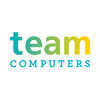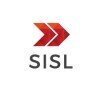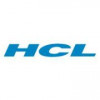Linux System Administrator
20+ Linux System Administrator Interview Questions and Answers for Freshers

Asked in Capgemini

Q. What could prevent a user from logging into the application?
Possible causes of user not able to login to an application
Incorrect username or password
Account locked or disabled
Expired password
Network connectivity issues
Application server down
Incorrect permissions or access rights
Firewall blocking access
Authentication server issues
Application configuration errors

Asked in Capgemini

Q. How do you create a user using single-line commands?
A user can be created in a single line command using the 'useradd' command in Linux.
Use the 'useradd' command followed by the username to create a user.
Specify additional options like home directory, shell, etc. if required.
Example: useradd john -m -s /bin/bash

Asked in Capgemini

Q. What is a cron job and how do you write one?
A cron job is a scheduled task that runs automatically at specific intervals on a Linux system.
Cron jobs are managed by the cron daemon, which reads a configuration file called crontab.
To write a cron job, you need to edit the crontab file using the 'crontab' command.
Each line in the crontab file represents a separate cron job and follows a specific format.
The format consists of five fields: minute, hour, day of month, month, and day of week.
You can use various symbols and op...read more

Asked in Capgemini

Q. How do you set a password for a newly created user?
To set the password for a newly created user in Linux, use the 'passwd' command followed by the username.
Open the terminal or SSH into the Linux system
Run the 'passwd' command followed by the username of the new user
Enter and confirm the new password when prompted

Asked in Netaxis IT Solutions

Q. Ssh port number? Difference between rpm and yum? Remove text file in Linux? Chmod use?
SSH port number is 22 by default. RPM is a package manager for Red Hat-based systems, while YUM is a higher-level package manager that uses RPM as its backend. To remove a text file in Linux, you can use the 'rm' command. Chmod is a command used to change the permissions of a file or directory.
SSH port number is typically 22, but it can be changed in the SSH server configuration file.
RPM is a low-level package manager used for installing, upgrading, and removing software pack...read more

Asked in ZenoCloud

Q. How do you reset the root password?
To reset the root password, you can use the single-user mode or a bootable Linux distribution.
Boot into single-user mode by interrupting the boot process and appending 'init=/bin/bash' to the kernel command line.
Remount the root filesystem as read-write using the 'mount -o remount,rw /' command.
Change the root password using the 'passwd' command.
Alternatively, boot from a bootable Linux distribution like a Live CD or USB and mount the root partition to reset the password.
Linux System Administrator Jobs




Asked in Capgemini

Q. What are decommissioning and recommissioning?
Decommission is the process of retiring a system or service, while recommission is the process of bringing it back into service.
Decommission involves shutting down and removing a system or service from operation.
Recommission involves restoring a decommissioned system or service back into operation.
Decommission and recommission are common processes in IT infrastructure management.
Examples include retiring an old server and replacing it with a new one, or taking a website offli...read more

Asked in Capgemini

Q. What is LVM, and why do we use it?
LVM (Logical Volume Manager) is a disk management tool used in Linux systems to manage storage devices and create logical volumes.
LVM allows for easy management of storage by abstracting physical storage devices into logical volumes.
It provides features like volume resizing, snapshots, and striping for improved performance and flexibility.
LVM enables dynamic allocation of storage space, making it easier to add or remove storage devices without disrupting the system.
It allows ...read more
Share interview questions and help millions of jobseekers 🌟


Asked in Sorcflow

Q. How do you configure LVM?
LVM (Logical Volume Manager) is configured by creating physical volumes, volume groups, and logical volumes.
Create physical volumes using the 'pvcreate' command
Create volume groups using the 'vgcreate' command
Create logical volumes using the 'lvcreate' command
Format the logical volumes with a file system using the 'mkfs' command
Mount the logical volumes to desired mount points using the 'mount' command
Update the '/etc/fstab' file to mount the logical volumes at boot

Asked in Capgemini

Q. what is NFS advantages of NFS
NFS allows remote access to files and directories, providing centralized storage and easy sharing.
Enables sharing of files and directories across multiple systems
Reduces storage costs by centralizing data on a single server
Improves data availability and reliability through redundancy
Simplifies administration by allowing for centralized management
Examples: Sharing files between a web server and a database server, sharing user home directories across a network

Asked in Team Computers

Q. Do you have hands-on experience with LVM, and can you describe the flow of LVM in a Linux file system?
LVM (Logical Volume Manager) allows flexible disk management in Linux, enabling dynamic resizing and efficient storage allocation.
LVM abstracts physical storage into logical volumes, allowing for easier management.
It consists of Physical Volumes (PVs), Volume Groups (VGs), and Logical Volumes (LVs).
Example: Create a PV with 'pvcreate /dev/sdb1', then a VG with 'vgcreate myvg /dev/sdb1'.
Logical Volumes can be resized with commands like 'lvextend' and 'lvreduce'.
LVM supports sn...read more

Asked in Capgemini

Q. What is an inode number?
An I node number is a unique identifier assigned to each file in a Unix-like file system.
I node number is also known as index node number.
It contains metadata about the file such as ownership, permissions, timestamps, etc.
It is used by the operating system to locate and access the file on the disk.
The command 'ls -i' can be used to display the I node number of a file.

Asked in SISL Infotech

Q. What is patching?
Patching is the process of applying updates or fixes to software or systems to address vulnerabilities or improve functionality.
Patching involves downloading and installing updates provided by software vendors.
It helps to fix bugs, security vulnerabilities, and improve performance.
Patches can be applied to operating systems, applications, or firmware.
Regular patching is crucial to maintain system integrity and protect against cyber threats.
Examples include applying security p...read more

Asked in Team Computers

Q. What are hard links and soft links in a Linux environment?
Hard links point to the same inode, while soft links (symlinks) point to the file name, allowing for different behaviors.
Hard links share the same inode number, meaning they reference the same data on disk.
Soft links (symlinks) are separate files that point to the original file's path.
Deleting the original file does not affect hard links, but it breaks soft links.
Example of hard link: 'ln file1.txt link_to_file1.txt'
Example of soft link: 'ln -s file1.txt symlink_to_file1.txt'

Asked in Team Computers

Q. What is the kernel, and how does it function?
The kernel is the core component of an operating system, managing hardware and software interactions.
Acts as a bridge between applications and hardware.
Manages system resources like CPU, memory, and I/O devices.
Handles process management, including scheduling and multitasking.
Provides system calls for applications to interact with hardware.
Examples include Linux kernel, Windows NT kernel, and macOS XNU kernel.

Asked in Fiserv

Q. What are the differences between Linux and Windows operating systems?
Linux is an open-source operating system, while Windows is a proprietary operating system developed by Microsoft.
Linux is open-source and free to use, while Windows is proprietary and requires a license.
Linux is highly customizable and can be modified by users, while Windows has limited customization options.
Linux is known for its stability and security, while Windows is more vulnerable to viruses and malware.
Linux uses a command-line interface (CLI) as its primary interface,...read more

Asked in Accenture

Q. What is LVM and how does it work?
LVM (Logical Volume Manager) is a tool used to manage disk storage in Linux systems by creating logical volumes from physical volumes.
LVM allows for dynamic resizing of logical volumes without the need to unmount the filesystem.
It provides features like striping, mirroring, and snapshotting for better data management.
Commands like pvcreate, vgcreate, lvcreate are used to create physical volumes, volume groups, and logical volumes respectively.

Asked in HCL Group

Q. What is the tar command?
tar is a command-line utility used for archiving files and directories into a single file.
Can be used to compress and decompress files
Can preserve file permissions and ownership
Can create and extract archives in various formats
Commonly used with gzip and bzip2 for compression
Example: tar -cvzf archive.tar.gz /path/to/directory

Asked in Genpact

Q. What is your current CTC?
CTC stands for Cost to Company, which is the total salary package offered to an employee by the company.
CTC includes salary, bonuses, benefits, and any other perks offered by the company.
It is the total amount of money a company is willing to spend on an employee.
CTC is often used as a benchmark to compare job offers from different companies.

Asked in Radical Technologies

Q. Tell us about DNS servers.
DNS servers are responsible for translating domain names into IP addresses, enabling communication between devices on the internet.
DNS servers store and manage a database of domain names and their corresponding IP addresses.
They facilitate the process of resolving domain names to IP addresses, allowing devices to communicate with each other.
DNS servers use a hierarchical structure, with root servers, top-level domain servers, and authoritative name servers.
They support variou...read more
Asked in Compitent

Q. What is a DNS server?
DNS server is a computer server that contains a database of public IP addresses and their associated hostnames.
DNS stands for Domain Name System
It translates domain names into IP addresses
It helps in resolving internet requests
Examples of DNS servers are Google DNS, OpenDNS, etc.

Asked in IBM

Q. What is the Linux kernel?
The Linux kernel is the core component of the Linux operating system, responsible for managing hardware resources and providing essential services.
Manages hardware resources such as CPU, memory, and peripherals
Provides essential services like process management, file system support, and networking
Open-source and constantly updated by a community of developers
Examples: Linux kernel versions 2.6, 3.0, 4.0, etc.
Asked in Cdp India

Q. How do you add a user?
To add a user in Linux, use the 'useradd' command followed by the username.
Use the 'useradd' command followed by the desired username to add a user.
You can specify additional options such as the user's home directory and default shell.
For example, to add a user named 'john' with home directory '/home/john' and default shell '/bin/bash', use: useradd -d /home/john -s /bin/bash john

Asked in TCS

Q. What is your expected CTC?
Expected CTC depends on experience, skills, location, and company size.
CTC can vary based on the level of experience - junior, mid-level, senior.
Skills such as expertise in Linux, scripting, networking, and cloud platforms can impact CTC.
Location plays a role - CTC in metropolitan areas may be higher than in rural areas.
Company size and industry also influence CTC - tech companies may offer higher salaries.
Negotiation skills can help in getting a better CTC offer.

Asked in Skylex Technologies

Q. What is SELinux?
SELinux (Security-Enhanced Linux) is a security module for the Linux kernel that provides access control security policies.
SELinux is a mandatory access control (MAC) system implemented in the Linux kernel.
It provides fine-grained access control policies, allowing administrators to define rules for how processes and users can interact with files, directories, and other system resources.
SELinux policies are defined in a set of rules called security contexts, which specify the ...read more

Asked in RenewBuy

Q. Different yum and wget command
yum is a package manager for Red Hat-based systems, while wget is a command-line tool for downloading files from the internet.
yum is used for installing, updating, and removing packages on Red Hat-based systems
wget is used for downloading files from the internet, supports HTTP, HTTPS, and FTP protocols
yum command example: yum install httpd
wget command example: wget https://example.com/file.zip

Asked in Red Hat

Q. Explain the boot process.
The boot process is the sequence of steps that a computer system goes through to start up and load the operating system.
BIOS/UEFI initialization
Boot loader selection and execution
Kernel initialization
Init process startup
User space initialization

Asked in Skylex Technologies

Q. How do you check communications on a Linux system?
Check communications in Linux using tools like ping, traceroute, and netstat to diagnose network issues.
Use 'ping' to test connectivity to a host: `ping google.com`.
Use 'traceroute' to see the path packets take to a destination: `traceroute google.com`.
Use 'netstat' to display network connections and listening ports: `netstat -tuln`.
Check firewall rules with 'iptables': `iptables -L`.
Use 'curl' or 'wget' to test HTTP connections: `curl -I http://example.com`.

Asked in Fiserv

Q. Commands in linux
Linux commands are used to interact with the operating system and perform various tasks.
Commands are case-sensitive
Most commands have options and arguments
Common commands include ls, cd, pwd, mkdir, rm, cp, mv, grep, ps, top, systemctl
Use man command_name to get more information about a specific command
Interview Experiences of Popular Companies





Top Interview Questions for Linux System Administrator Related Skills

Calculate your in-hand salary
Confused about how your in-hand salary is calculated? Enter your annual salary (CTC) and get your in-hand salary


Reviews
Interviews
Salaries
Users










